To prevent sweating inside the barn, the correct ventilation system must be installed, indoor–outdoor air exchange should be balanced, and humidity levels must be continuously monitored. In particular, the heat and vapor that increase with the animals’ respiration cause sweating on walls and roofs if not expelled quickly. This negatively affects not only the health of the structure but also the comfort of the animals. Therefore, systems that maintain continuous airflow should be used together with structural measures that support insulation.
Hot air accumulating under roofs and on ceiling surfaces is the main factor that triggers sweating. Large-diameter ceiling fans, roof vents, and window systems that enable natural air passage move this hot air upward and out. Factors that raise moisture at floor level are reduced through regular manure removal and bedding control. In addition, anti-fog surface coatings can be used in areas with high humidity to prevent condensation.
Although sweating is often seen only as a summer problem, similar effects also occur in winter in areas of the structure that are in contact with outdoor temperatures. Therefore, not just quick fixes but a climate control approach that provides a controlled environment throughout the year should be adopted. By planning fan types, ventilation openings, and insulation details according to each bay’s needs, imbalances in indoor humidity and temperature are eliminated.
Why Does Sweating Occur in Barns?
Sweating in barns is the result of condensation formed when warm indoor air comes into contact with cold surfaces. As the indoor temperature increases, the air holds more moisture, and this moisture condenses on poorly insulated walls or roof surfaces, turning into water droplets. This becomes more pronounced typically in the morning and evening hours when there are significant differences between outdoor and indoor temperatures. In environments with inadequate ventilation, this cycle accelerates and the structure begins to sweat.
Main causes leading to sweating in barns:
- Insufficient or unbalanced ventilation system
- Poor roof and wall insulation
- Increased heat and humidity due to excessive animal density
- Metal or concrete surfaces in contact with cold air
- Failure to expel vapor rising from manure and urine
- Structural gaps where heat losses occur uncontrollably
If sweating is not brought under control, puddles form on surfaces, which damages building materials and puts animal safety at risk due to slippery floors. In addition, bacteria, mold, and fungi proliferate rapidly in continuously damp areas. Unless correct analyses and interventions are carried out to address the source of the problem, sweating cannot be prevented with temporary solutions. For lasting improvement, all these causes must be evaluated together.
Ventilation Systems and Their Effects on Sweating
When ventilation systems are not properly installed, the hot air and humidity accumulating inside the barn condense on wall and ceiling surfaces, causing sweating. An effective ventilation system keeps this humid air in constant motion, expelling it and preventing evaporation indoors from turning into condensation. In particular, tunnel-type and cross-ventilation setups move indoor air outward with controlled flow, while ceiling fans remove heat accumulated above, reducing the risk of condensation.
Effects of ventilation systems on sweating:
- Prevents humid air from accumulating indoors
- Prevents condensation on ceiling and wall surfaces
- Exhausts hot air layers from above
- Balances evaporation at floor level
- Reduces condensation caused by temperature differences
- Keeps building elements dry by ensuring steady air circulation
- Brings daily humidity changes under control more quickly
For ventilation to operate effectively, the system must be designed in accordance with animal density, building type, and climatic conditions. When elements such as fan placement, vent directions, and automatic control panels are planned as a whole, the risk of sweating is minimized. Thus, both the structural integrity is preserved and the animals’ living environment becomes healthier.
The Role of Insulation in Sweating
Insulation is one of the fundamental building blocks for preventing sweating in barns. When cold outdoor air comes into direct contact with the warm indoor environment, condensation starts on surfaces and sweating appears. Insulation layers interrupt this temperature transfer and prevent vapor from condensing on surfaces. In this way, sweating in roof, wall, and ceiling areas is prevented, and the structure stays dry.
A well-planned insulation system controls not only heat but also the moisture carried with it. Roof panels, exterior façade insulation, and connection details that do not create thermal bridges must be applied carefully. Thus, warm indoor air is preserved, incoming cold air from outside is slowed, and interior surface temperatures are kept stable. Thanks to this balance, the likelihood of condensation is eliminated.
For insulation to be effective against sweating, application quality is as important as the chosen material. Insulation applied incompletely or irregularly may cause condensation at specific points. Over time, this leads not only to moisture problems but also to rot and structural damage. Therefore, insulation is not a one-time action but a protective domain that requires regular maintenance and inspection. When properly applied, it both stops sweating and provides long-term energy savings.
Cross Ventilation and Roof Exhaust Ventilation
A cross-ventilation system directs airflow evenly inside the barn, bringing humidity and temperature under control. Inlet and outlet openings placed opposite each other on the side walls use natural air movement to bring fresh air in while carrying dirty, moisture-laden air out. This system provides effective air circulation at the height where the animals are located and, especially in summer, reduces the heat building up inside, greatly decreasing sweating.
Roof exhaust ventilation enables effective removal of hot air and vapor accumulating at ceiling level. Rising humid air is expelled from the environment through roof vents or chimney-type openings. When used together with cross ventilation, an airflow cycle forms indoors. This cycle provides steady and controlled air exchange, maintaining humidity balance. It also plays a critical role in preventing condensation-induced sweating.
Although both ventilation methods are beneficial on their own, they offer a much stronger solution when planned together. Especially in areas with large-scale livestock, cross ventilation improves air quality at floor level, while roof exhaust ventilation carries harmful moisture accumulated above to the outside. Thanks to this combination, heat buildup inside the structure is prevented, animal comfort increases, and the structure’s lifespan is extended. With properly placed openings and balanced fan use, these systems deliver effective results year-round.
Do HVLS Fans Prevent Sweating?
HVLS fans create wide-scale air movement at low RPMs in large-volume spaces, ensuring balanced distribution of warm and humid indoor air. This airflow especially facilitates directing the hot air accumulated near the ceiling downward, reducing the likelihood of condensation. While stagnant humid air triggers sweating on surfaces, continuous circulation achieved with HVLS fans prevents vapor from contacting the surface.
The horizontal and vertical air movement created by the fans helps equalize the air layers inside. This largely prevents condensation that may occur under the roof, along wall edges, and in corners. It also accelerates the evaporation of moisture on the floor, helping the accumulated water to be expelled quickly. Compared to conventional fans, HVLS fans affect a much larger area and provide a homogeneous air distribution.
Using HVLS fans alone is also effective; however, when applied together with cross ventilation, roof exhaust openings, and insulation, the result is much more efficient. They both prevent the formation of sweating and improve air quality, enhancing animal welfare. Thanks to energy-saving motor options, they offer an economical solution during long operating periods. Especially in the summer months, they provide stable airflow against rising indoor temperatures, largely eliminating structural problems caused by sweating.
Seasonal Ventilation Settings (Winter–Summer Transition)
At late spring and early summer when temperatures rise, fan speeds are gradually increased. Side vents are fully opened and roof exhaust openings are widened to support maximum air exchange. Toward late autumn and into winter, as the indoor–outdoor temperature difference grows, vent settings are narrowed, sensor-controlled fans provide a steady low-speed airflow, and curtains or windbreak panels are activated to prevent heat loss.
Critical ventilation settings during the winter–summer transition:
- In spring, open roof openings early in the evening and close them in the cool of the morning
- Run tunnel ventilation at full capacity at the start of summer; set humidity sensors to a 70% threshold
- In autumn, keep vent panels partially open; reduce nighttime fan speed to 40%
- In winter, block thermal bridges with curtain systems; run floor scrapers twice a day
- During seasonal transitions, clean fan filters and redo airflow tests
Linking seasonal settings to a planned schedule both keeps energy costs under control and continuously maintains animal health at an optimal level. Thanks to precise adjustments made during transition periods, the likelihood of condensation decreases, indoor air quality is preserved throughout the year, and building elements remain resistant to moisture-related damage.
"To prevent sweating inside the barn, the correct ventilation system must be installed, indoor–outdoor air exchange should be balanced, and humidity levels must be continuously monitored. In particular, the heat and vapor that increase with the animals’ respiration cause sweating on walls and roofs if not expelled quickly. This negatively affects not only the health of the structure but also the comfort of the animals. Therefore, systems that maintain continuous airflow should be used together with structural measures that support insulation.
Hot air accumulating under roofs and on ceiling surfaces is the main factor that triggers sweating. Large-diameter ceiling fans, roof vents, and window systems that enable natural air passage move this hot air upward and out. Factors that raise moisture at floor level are reduced through regular manure removal and bedding control. In addition, anti-fog surface coatings can be used in areas with high humidity to prevent condensation.
Although sweating is often seen only as a summer problem, similar effects also occur in winter in areas of the structure that are in contact with outdoor temperatures. Therefore, not just quick fixes but a climate control approach that provides a controlled environment throughout the year should be adopted. By planning fan types, ventilation openings, and insulation details according to each bay’s needs, imbalances in indoor humidity and temperature are eliminated.
Why Does Sweating Occur in Barns?
Sweating in barns is the result of condensation formed when warm indoor air comes into contact with cold surfaces. As the indoor temperature increases, the air holds more moisture, and this moisture condenses on poorly insulated walls or roof surfaces, turning into water droplets. This becomes more pronounced typically in the morning and evening hours when there are significant differences between outdoor and indoor temperatures. In environments with inadequate ventilation, this cycle accelerates and the structure begins to sweat.
Main causes leading to sweating in barns:
- Insufficient or unbalanced ventilation system
- Poor roof and wall insulation
- Increased heat and humidity due to excessive animal density
- Metal or concrete surfaces in contact with cold air
- Failure to expel vapor rising from manure and urine
- Structural gaps where heat losses occur uncontrollably
If sweating is not brought under control, puddles form on surfaces, which damages building materials and puts animal safety at risk due to slippery floors. In addition, bacteria, mold, and fungi proliferate rapidly in continuously damp areas. Unless correct analyses and interventions are carried out to address the source of the problem, sweating cannot be prevented with temporary solutions. For lasting improvement, all these causes must be evaluated together.
Ventilation Systems and Their Effects on Sweating
When ventilation systems are not properly installed, the hot air and humidity accumulating inside the barn condense on wall and ceiling surfaces, causing sweating. An effective ventilation system keeps this humid air in constant motion, expelling it and preventing evaporation indoors from turning into condensation. In particular, tunnel-type and cross-ventilation setups move indoor air outward with controlled flow, while ceiling fans remove heat accumulated above, reducing the risk of condensation.
Effects of ventilation systems on sweating:
- Prevents humid air from accumulating indoors
- Prevents condensation on ceiling and wall surfaces
- Exhausts hot air layers from above
- Balances evaporation at floor level
- Reduces condensation caused by temperature differences
- Keeps building elements dry by ensuring steady air circulation
- Brings daily humidity changes under control more quickly
For ventilation to operate effectively, the system must be designed in accordance with animal density, building type, and climatic conditions. When elements such as fan placement, vent directions, and automatic control panels are planned as a whole, the risk of sweating is minimized. Thus, both the structural integrity is preserved and the animals’ living environment becomes healthier.
The Role of Insulation in Sweating
Insulation is one of the fundamental building blocks for preventing sweating in barns. When cold outdoor air comes into direct contact with the warm indoor environment, condensation starts on surfaces and sweating appears. Insulation layers interrupt this temperature transfer and prevent vapor from condensing on surfaces. In this way, sweating in roof, wall, and ceiling areas is prevented, and the structure stays dry.
A well-planned insulation system controls not only heat but also the moisture carried with it. Roof panels, exterior façade insulation, and connection details that do not create thermal bridges must be applied carefully. Thus, warm indoor air is preserved, incoming cold air from outside is slowed, and interior surface temperatures are kept stable. Thanks to this balance, the likelihood of condensation is eliminated.
For insulation to be effective against sweating, application quality is as important as the chosen material. Insulation applied incompletely or irregularly may cause condensation at specific points. Over time, this leads not only to moisture problems but also to rot and structural damage. Therefore, insulation is not a one-time action but a protective domain that requires regular maintenance and inspection. When properly applied, it both stops sweating and provides long-term energy savings.
Cross Ventilation and Roof Exhaust Ventilation
A cross-ventilation system directs airflow evenly inside the barn, bringing humidity and temperature under control. Inlet and outlet openings placed opposite each other on the side walls use natural air movement to bring fresh air in while carrying dirty, moisture-laden air out. This system provides effective air circulation at the height where the animals are located and, especially in summer, reduces the heat building up inside, greatly decreasing sweating.
Roof exhaust ventilation enables effective removal of hot air and vapor accumulating at ceiling level. Rising humid air is expelled from the environment through roof vents or chimney-type openings. When used together with cross ventilation, an airflow cycle forms indoors. This cycle provides steady and controlled air exchange, maintaining humidity balance. It also plays a critical role in preventing condensation-induced sweating.
Although both ventilation methods are beneficial on their own, they offer a much stronger solution when planned together. Especially in areas with large-scale livestock, cross ventilation improves air quality at floor level, while roof exhaust ventilation carries harmful moisture accumulated above to the outside. Thanks to this combination, heat buildup inside the structure is prevented, animal comfort increases, and the structure’s lifespan is extended. With properly placed openings and balanced fan use, these systems deliver effective results year-round.
Do HVLS Fans Prevent Sweating?
HVLS fans create wide-scale air movement at low RPMs in large-volume spaces, ensuring balanced distribution of warm and humid indoor air. This airflow especially facilitates directing the hot air accumulated near the ceiling downward, reducing the likelihood of condensation. While stagnant humid air triggers sweating on surfaces, continuous circulation achieved with HVLS fans prevents vapor from contacting the surface.
The horizontal and vertical air movement created by the fans helps equalize the air layers inside. This largely prevents condensation that may occur under the roof, along wall edges, and in corners. It also accelerates the evaporation of moisture on the floor, helping the accumulated water to be expelled quickly. Compared to conventional fans, HVLS fans affect a much larger area and provide a homogeneous air distribution.
Using HVLS fans alone is also effective; however, when applied together with cross ventilation, roof exhaust openings, and insulation, the result is much more efficient. They both prevent the formation of sweating and improve air quality, enhancing animal welfare. Thanks to energy-saving motor options, they offer an economical solution during long operating periods. Especially in the summer months, they provide stable airflow against rising indoor temperatures, largely eliminating structural problems caused by sweating.
Seasonal Ventilation Settings (Winter–Summer Transition)
At late spring and early summer when temperatures rise, fan speeds are gradually increased. Side vents are fully opened and roof exhaust openings are widened to support maximum air exchange. Toward late autumn and into winter, as the indoor–outdoor temperature difference grows, vent settings are narrowed, sensor-controlled fans provide a steady low-speed airflow, and curtains or windbreak panels are activated to prevent heat loss.
Critical ventilation settings during the winter–summer transition:
- In spring, open roof openings early in the evening and close them in the cool of the morning
- Run tunnel ventilation at full capacity at the start of summer; set humidity sensors to a 70% threshold
- In autumn, keep vent panels partially open; reduce nighttime fan speed to 40%
- In winter, block thermal bridges with curtain systems; run floor scrapers twice a day
- During seasonal transitions, clean fan filters and redo airflow tests
Linking seasonal settings to a planned schedule both keeps energy costs under control and continuously maintains animal health at an optimal level. Thanks to precise adjustments made during transition periods, the likelihood of condensation decreases, indoor air quality is preserved throughout the year, and building elements remain resistant to moisture-related damage.

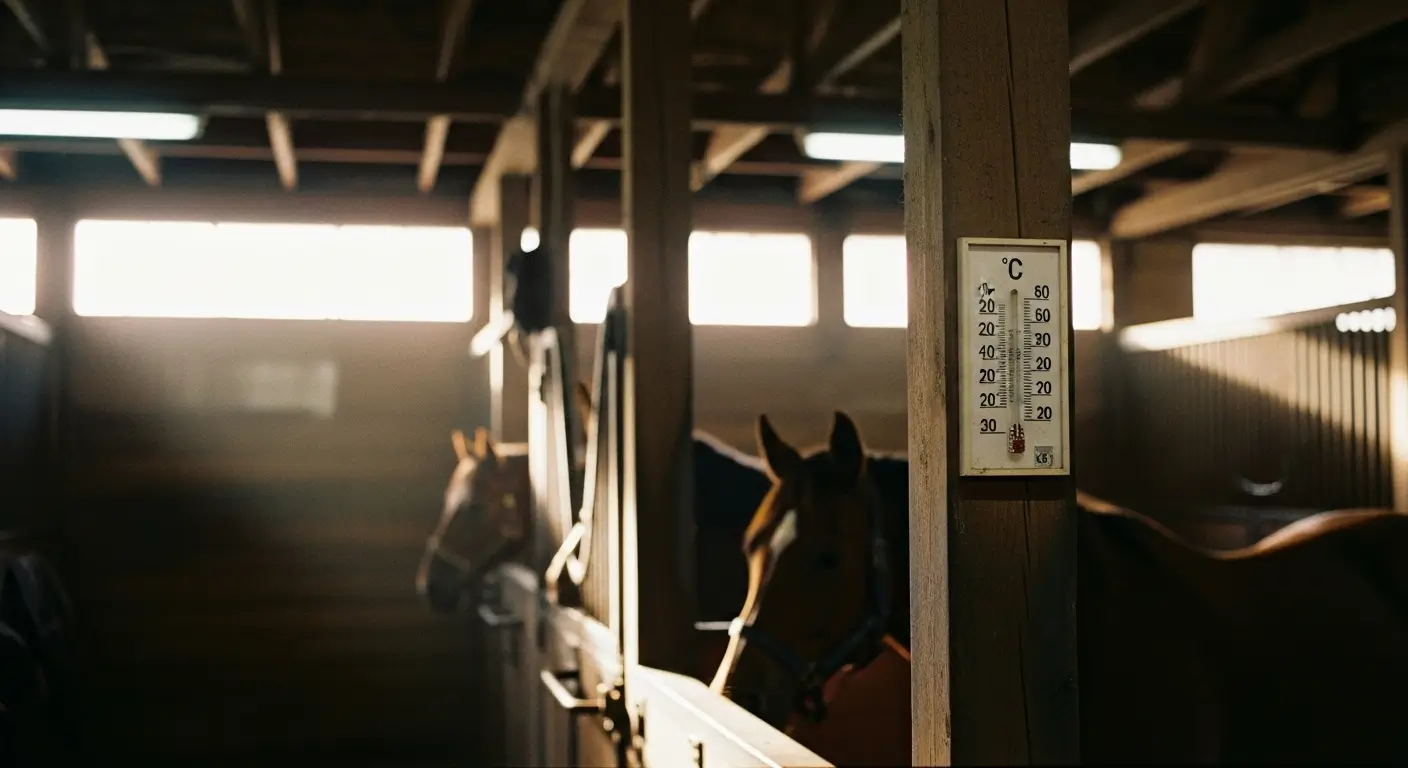
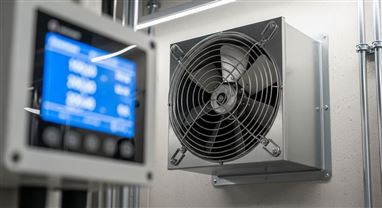

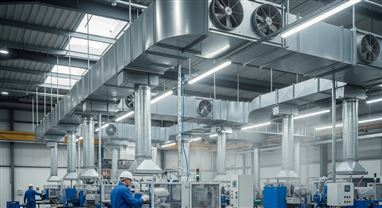
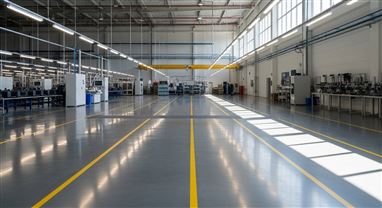

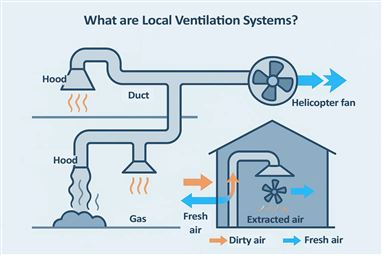



Leave a Comment